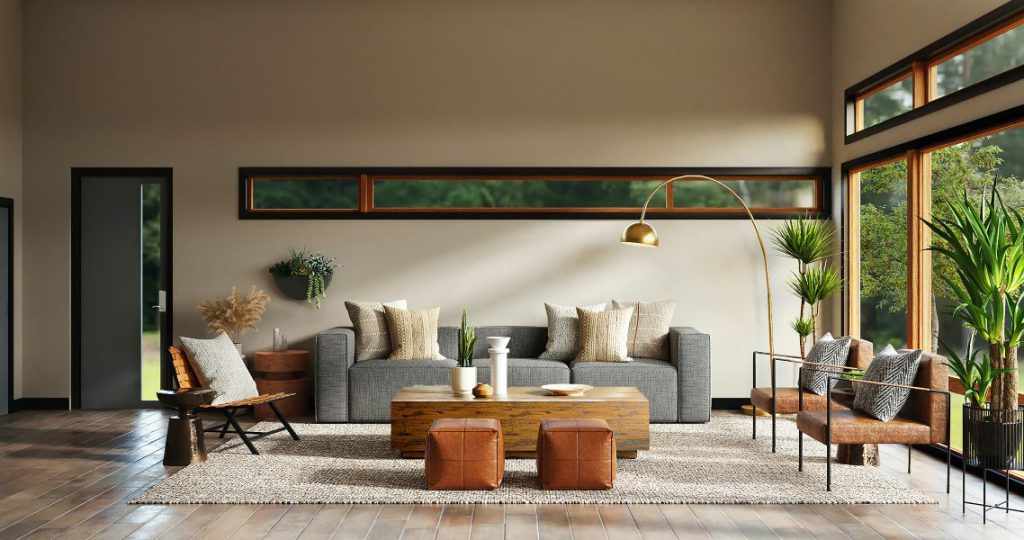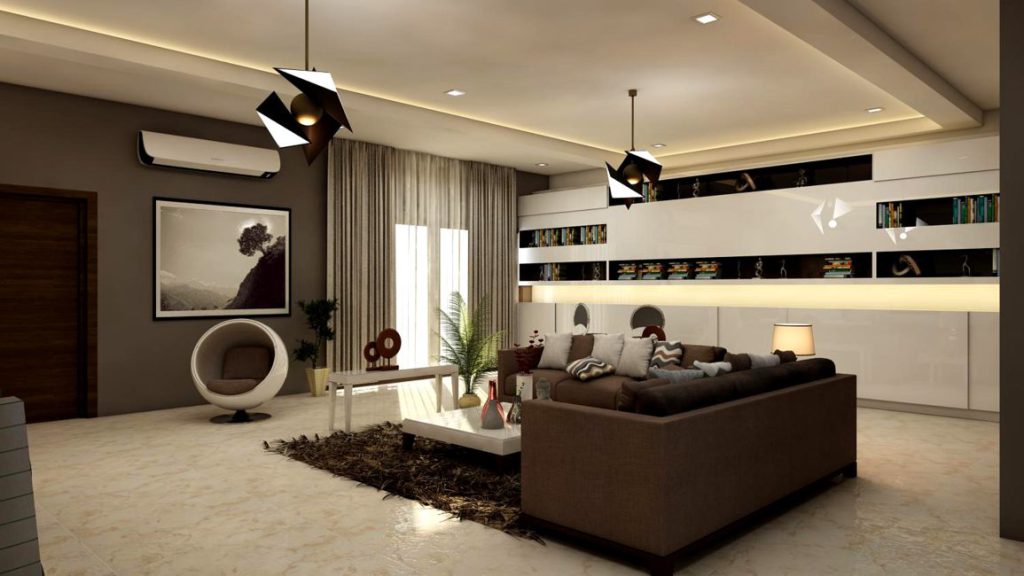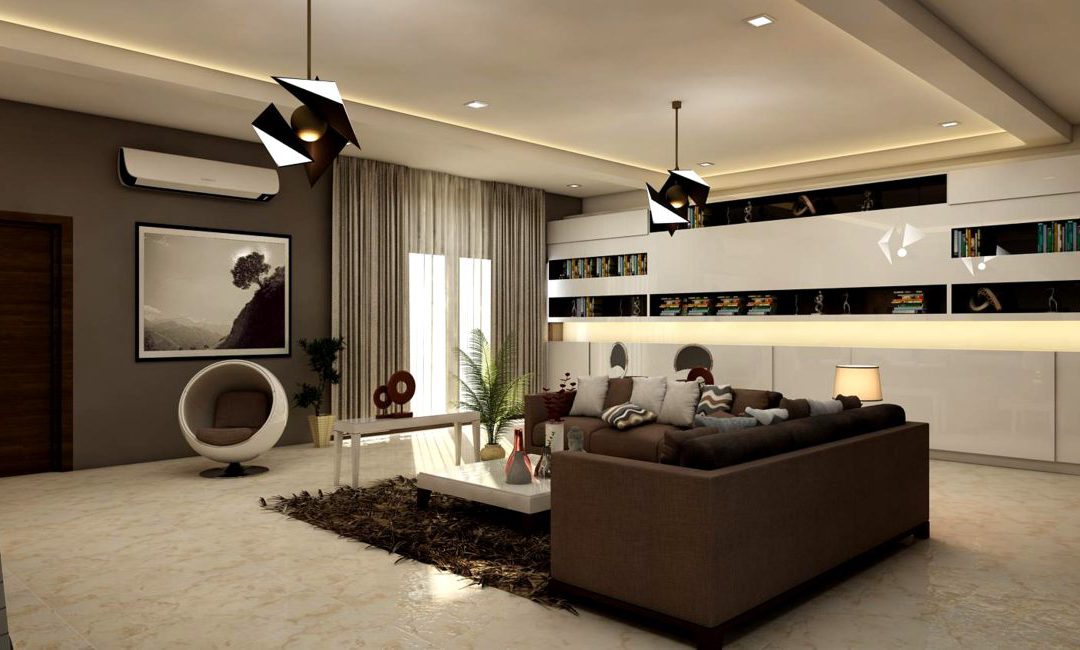Designing an interior project without the involvement of a lighting designer is akin to going out for a meal and only consuming the bread from the basket. While the bread may be delicious, you’re missing out on a variety of more enticing dishes. Skillfully placed lighting adds an extra dimension to a space, breathing life into an interior design project.
Effective lighting creates a sense of depth, height, and cozy areas, while also drawing attention to the most impressive features of a room. It revolves around achieving a balance between light and shadow, infusing new energy into the interior. An architect or interior designer might simply incorporate a grid of downlights into their plans, which fails to do justice to their overall design. By involving lighting experts who can collaborate harmoniously with the interior designer or architect, the impact of the space can be maximized.

What is the importance of lighting in interior design?
Lighting is just as crucial as any other element in the design process. Good lighting has the power to transform and enhance a space. We utilize light and shadow to create a comfortable yet dramatic and atmospheric environment. For instance, if we want to highlight an artwork on a wall, we require a downlight to illuminate the artwork while leaving the surrounding area slightly darker, effectively drawing our attention to the painting.
Our expertise lies in skillfully combining various lighting elements such as downlights, uplights, wall lights, floor lights, hidden lights, feature lights, integrated architectural lighting, pendants, and lamps to add depth and immense interest to each room. We employ different strategies for different solutions. Illuminating special features like a table adorned with flowers may involve using a narrow beam Polespring downlight, but we also incorporate more general highlighting options. Lighting a beautiful curtain fabric would be approached differently from creating well-targeted bright areas for tasks like cooking, reading, or working at a desk.

What role does daylight play in interior design?
Daylight is a critical factor for all designers. Both interior designers and lighting designers carefully consider how daylight enters each space they work on, as it significantly impacts the placement of everything. Daylight is as important as artificial light. In a living space with expansive windows, natural light pours in, creating a bright and open atmosphere. In response, we must consider how artificial light will complement and interact with the daylight, offering different lighting options throughout the day. The lighting requirements on a gray afternoon in London would differ greatly from those on a bright sunny morning in Dubai.
Architectural lighting still plays a role even when daylight is present. It can be used to brighten dark areas on shelves, add brilliance to task areas, or highlight artworks. LED linear strips can infuse warmth into joinery and key features of a room and may be necessary to provide focus and softness in combination with natural light. The key lies in managing lighting options for different times of the day, employing a combination of both daylight and artificial light. By utilizing pre-set options on a switch pad, optimal results can be achieved.
What impact does artificial light have on interior design?
Artificial light creates visual stimulation, drawing our attention to the brightest points in a room. We utilize artificial light to accentuate specific features within a space. In a kitchen, this could involve highlighting flowers on a kitchen island or dining table. We also pay attention to the edges of the room to enhance the overall perspective. Subtle lighting can be added to vertical surfaces, such as cupboards, using perimeter lights, which create reflected light off those surfaces.
Getting the functional task lighting right, whether it’s for meal preparation, making drinks, or simply seeing inside cupboards, is also vital. Diffuse light is employed for general warmth. A well-designed lighting scheme that incorporates a variety of artificial lights adds brightness, moments of drama, and layers of depth to the space.

What is the role of decorative lighting in interior design?
Decorative lighting, such as striking pendants, interesting wall lights, or feature lamps, serves a purpose beyond merely adding visually appealing objects to a room. While our attention may be drawn to a large and attractive pendant over a table, the addition of a couple of downlights on either side truly enhances the quality of the lighting.
Decorative lighting holds importance, but a skilled lighting designer will combine it with architectural lighting for optimal results. For a cozy atmosphere in the late afternoon, you may choose to turn on decorative lighting while watching TV or reading a book under a beautiful lamp or enjoying an aperitif. At other times, a more comprehensive combination of lights may be necessary.
What is architectural lighting in interior design?
Architectural lighting encompasses the use of concealed lighting integrated within the architecture or joinery. Downlights, uplights, LED strip lights, floor washers, and other tools allow us to create an engaging space while remaining hidden within the architecture. They serve to highlight materials and provide general illumination. When incorporated into joinery, such as shelving, cupboards, or architectural coffers, this type of lighting adds depth, areas of interest, and layers of light throughout the room.
In older houses, architectural lighting can highlight interesting plasterwork or illuminate feature columns from below. Architectural lighting also guides our eyes through spaces, whether it’s leading us to an adjacent room, along a corridor, or up a staircase. By positioning uplights near doorways or in window sills, we can frame views and draw attention beyond the glass, adding depth from the inside.

How do you achieve the right balance of decorative and architectural lighting in interior design?
A successful and adaptable lighting scheme always incorporates a combination of decorative and architectural lighting. Our task is to assess the space or plans, explore ideas, and then strategically plan layers of light to achieve a balanced result. We aim for a harmonious blend of ambient light, accent light, and architectural lighting.
The “wow” factor is often achieved through cleverly integrated hidden lighting details. Returning to the kitchen example, while you may have downlights above the kitchen island, adding an LED strip underneath introduces layering and drama. This simple trick, providing low-level brightness, can significantly alter the ambiance of the space at night. Another example is illuminating the walls behind a table with a banquette by placing an LED strip at the back, creating a different atmosphere and an impression of a wider space. A coffer without light may go unnoticed, but by adding an LED strip to uplight the ceiling, the entire room feels brighter as the light reflects back into the space.
What quality of light is needed for an interior design project?
LED lights are commonly used today, but the quality of each individual light source has a significant impact on the space. We always consider the quality of color temperature and color consistency. For us, a high-quality fitting with a CRI (color rendering index) above 90 provides the most natural light. The CRI value indicates how accurately the light replicates the true colors of the objects it illuminates. Reds, deep blues, and deep greens appear much truer when highlighted with a high CRI light.
When using multiple downlights in a space, especially with white or neutral walls, maintaining consistency in color temperature is essential. Color temperature is measured in Kelvins. Architectural lighting can have a slightly cooler color temperature of around 2,700K, while decorative items like table lamps, wall lights, and pendants work better with a warmer color temperature of around 2,400K. Our role is to create harmony by using ceiling lights and uplights with 2,700K and incorporating decorative lighting with 2,400K. LED strips within joinery can match the color warmth of the decorative lighting, providing a unified lighting experience.

